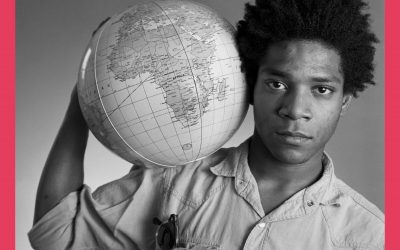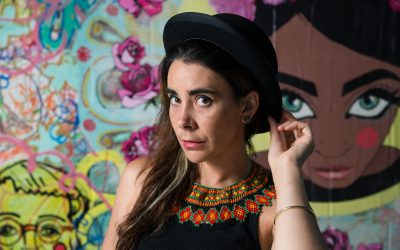 “When Mr. Menkes first came to New York Downtown Hospital, he was very interested in exploring the history of the hospital. He realized that our founding and historical narratives in many ways formed the institution that he would direct. He, his assistant and I spent a good deal of time going through a dusty storage room to recover records and pieces that went back to the earliest days of the Hospital. We found journals of early board meetings; portraits, engraved plates and correspondence related to the Blackwell sisters; and artifacts like the writing desk, the manufacture of which we were able to trace back to Bristol, England, at the time Elizabeth’s family came to the United States. It most likely was used by her father on the way over and then handed down to Dr. Blackwell.”
“When Mr. Menkes first came to New York Downtown Hospital, he was very interested in exploring the history of the hospital. He realized that our founding and historical narratives in many ways formed the institution that he would direct. He, his assistant and I spent a good deal of time going through a dusty storage room to recover records and pieces that went back to the earliest days of the Hospital. We found journals of early board meetings; portraits, engraved plates and correspondence related to the Blackwell sisters; and artifacts like the writing desk, the manufacture of which we were able to trace back to Bristol, England, at the time Elizabeth’s family came to the United States. It most likely was used by her father on the way over and then handed down to Dr. Blackwell.”
–Anthony Ercolano, COO Downtown Hospital, on CEO Jeffery Menkes arrival and the group discovery of Dr. Elizabeth Blackwell’s belongings.
Elizabeth Blackwell was the first female physician in America. Born in Bristol, England, in 1821, Blackwell immigrated to New York with her family in 1832. During her teens, she pondered her purpose in the world, for she believed each person had talents to utilize. It was not until later, however, when Blackwell was 24 years old and a dear friend of hers died, that an idea began to fester. Before the woman’s passing, she told Blackwell that had there been a female doctor attending to her, she would have been put at ease.
Though Blackwell disliked the human body, she began reading medical books and eventually apprenticed to a retired physician by the name of John Dickson in exchange for her teaching music and piano lessons in his school in North Carolina. Dickson’s brother, Samuel, also a doctor, took Blackwell into his South Carolina home, where he granted her access to volumes of medical books. Blackwell applied to medical schools, only to receive many rejection letters. Dr. Joseph Pancoast of Jefferson Medical College in Philadelphia offered her the opportunity to attend classes, but only if she disguised as a man. She declined.
A resolute Blackwell was at last accepted to Geneva Medical College in upstate New York and began her two-year tenure in November 1847. The story goes that the administration agreed to admit her so long as the students—all male of course—unanimously voted yes. Thinking it was a joke, the students obliged, all voting in favor of her admission. Blackwell raced to the top, graduating first in her class on January 23, 1849.
Later that year, Blackwell traveled to France. While tending to a sick baby, she was blinded when infected water from a syringe squirted into her eye. She had surgery to replace the blinded eye with a glass one, but her dreams of becoming a surgeon vanished. Nonetheless, Blackwell persevered. She spent time in London before returning to New York in August 1851, where local clinics refused to employ her. Determined, she rented a floor at 44 University Place that served as her home and office. In 1853, she set up a free dispensary at East 7th Street, which then relocated to 150 East 3rd Street and was called New York Dispensary for Poor Women and Children. Simultaneously, she visited slum dwellings to treat those too weak to go to the clinic. Her popularity grew—people often referred to her as the “doctress”—and her practice began to expand. So much so, in fact, that she sought more space. Blackwell raised enough money to buy a house at 64 Bleecker Street and transformed it into a small hospital. She founded a fully equipped, female-staffed hospital for women and children and acted as its Director. The New York Infirmary for Indigent Women and Children opened on May 12, 1857. The hospital grew, and on November 2, 1868, Blackwell opened The Women’s Medical College of the New York Infirmary at 126 Second Avenue. The school was the first four-year medical program in the country.
In 1869, Elizabeth Blackwell left New York for England, believing she had completed her pioneer work in America. Blackwell entrusted the infirmary to her sister, Emily. In time, the hospital acquired a new name: The New York Downtown Hospital.
-by Andrea Tullman












